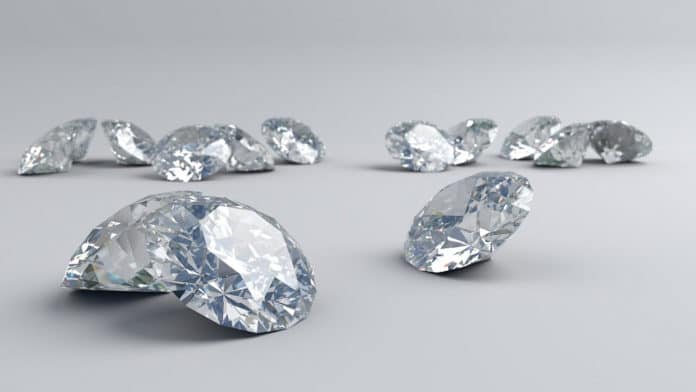A team of scientists, including from the Australian National University (ANU) and RMIT University, created two types of diamonds in a laboratory at room temperature within just a few minutes. Those two types of diamonds: the kind found on an engagement ring and a different type of diamond called Lonsdaleite, which is found in nature at the site of meteorite impacts such as Canyon Diablo in the US.
ANU Professor Jodie Bradby said, “This breakthrough has defied nature to make diamonds in minutes in a laboratory at room temperature – a process that normally requires billions of years, huge amounts of pressure, and super-hot temperatures.”
“This new, unexpected discovery shows both Lonsdaleite and regular diamond can also form at normal room temperatures by just applying high pressures – equivalent to 640 African elephants on the tip of a ballet shoe.”
“The twist in the story is how we apply the pressure. As well as very high pressures, we allow the carbon to experience something called ‘shear’ – which is like a twisting or sliding force. We think this allows the carbon atoms to move into place and form Lonsdaleite and regular diamond.”
Using advanced electron microscopy techniques, scientists could capture solid and intact slices from the experimental samples to create snapshots of how the two types of diamonds formed. These pictures have shown that the regular diamonds only form in the middle of these Lonsdaleite veins under this new method developed by our cross-institutional team.
Co-lead researcher Professor Dougal McCulloch said, “Seeing these little ‘rivers’ of Lonsdaleite and regular diamond for the first time was just amazing and helps us understand how they might form.”
Professor Bradby said, “Lonsdaleite has the potential to be used for cutting through ultra-solid materials on mining sites.”
“Creating more of this rare but super-useful diamond is the long-term aim of this work.”
Ms. Xingshuo Huang said, “Being able to make two types of diamonds at room temperature was exciting to achieve for the first time in our lab.”
Journal Reference:
- Dougal G. McCulloch et al. Investigation of Room Temperature Formation of the Ultra‐Hard Nano carbons Diamond and Lonsdaleite. Small. DOI: 10.1002/smll.202004695
